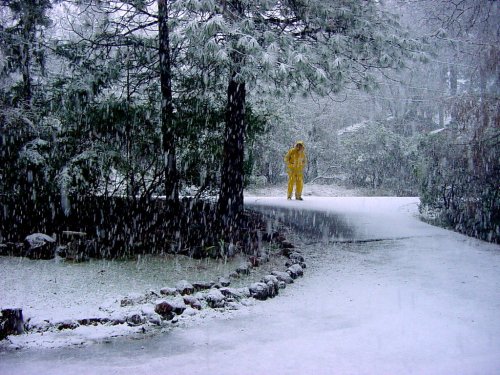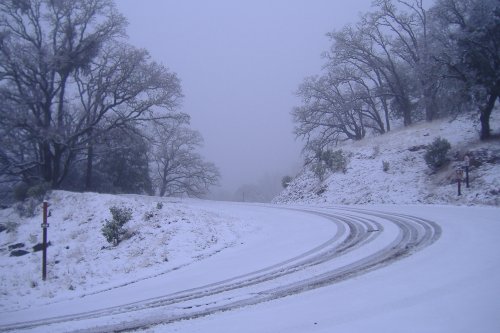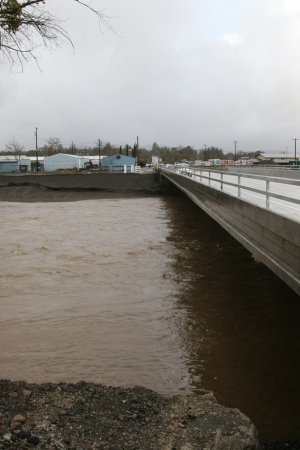LAKE COUNTY – The state and federal governments are doing battle over greenhouse gas standards that would have far-reaching effects on air quality and would require improvements in new vehicles and the fuels Californians – and Lake County residents – use every day.
California Attorney General Edmund G. Brown Jr. sued the United States Environmental Protection Agency (EPA) on behalf of the State of California Wednesday, saying the EPA was “wrongfully and illegally” blocking the state's landmark tailpipe greenhouse gas emissions standards.
Brown's lawsuit, filed in the U.S. Court of Appeals for the 9th Circuit, challenges the EPA's refusal to allow the state to implement its emissions law, which Brown's office reported requires that motor vehicle greenhouse gas emissions be reduced by 30 percent by 2016.
Fifteen other states or agencies have pledged to join the suit as intervenors, according to the Attorney General's Office.
Brown's office reported that cars generate 20 percent of all human-made carbon dioxide emissions in the United States, and at least 30 percent of such emissions in California.
To go into effect, California's new emissions standard required a waiver from the EPA, which the agency's administrator, Stephen Johnson, refused to grant.
In a letter to Gov. Arnold Schwarzenegger dated Dec. 19, 2007, Johnson denied California's request for the waiver.
That same day, Johnson's office released a statement in which he said new federal energy legislation would set mileage standards.
"The Bush Administration is moving forward with a clear national solution – not a confusing patchwork of state rules – to reduce America’s climate footprint from vehicles," Johnson said. "President Bush and Congress have set the bar high, and, when fully implemented, our federal fuel economy standard will achieve significant benefits by applying to all 50 states.”
Johnson's Dec. 19 statement also noted that EPA “has determined that a unified federal standard of 35 miles per gallon will deliver significant reductions in greenhouse gas emissions from cars and trucks in all 50 states, which would be more effective than a partial state-by-state approach of 33.8 miles per gallon.”
EPA reported that it held two hearings on California's waiver request and reviewed more than 100,000 written comments and thousands of pages of technical and scientific documentation received during the public comment period, which lasted from April 30 to June 15.
The agency's conclusion: Because greenhouse gases are fundamentally global in nature, EPA did not conclude that California's request met the Clean Air Act's criteria of meeting “compelling and extraordinary conditions.”
Brown shot back that the EPA's finding reversed decades of agency practice and ignored the dangerous consequences of global warming to California – including a severely reduced snowpack.
Brown also said Johnson's letter was “shocking in its incoherence and utter failure to provide legal justification for the administrator's unprecedented action.”
He added that under 1963's federal Clean Air Act, California is “expressly allowed” to impose environmental regulations that are more strict that required by the federal government because of the state's “compelling and extraordinary conditions” – which include unique topography, climate, and high number and concentration of vehicles.
The Clean Air Act also empowers the state to challenge the decision, said Brown.
Until the Dec. 19 decision, Brown reported that EPA had never turned down a request from California for a waiver, granting approximately 50 over the last 40 years for catalytic converters to leaded gasoline regulations.
Brown added that the National Academy of Sciences has reviewed the waiver system and strongly supports maintaining California's role as “a proving ground for new-emission control technologies that benefit California and the rest of the nation.”
According to Brown, 15 other states or state agencies — Massachusetts, Arizona, Connecticut, Delaware, Illinois, Maine, Maryland, New Jersey, New Mexico, New York, Oregon, Pennsylvania Department of Environmental Protection, Rhode Island, Vermont, and Washington — are joining Wednesday's lawsuit as intervenors.
California's auto emission rules have survived previous challenges.
In December, Brown's office reported that the U.S. District Court in Fresno rejected the auto industry's challenge to California's law, concluding that both California and the EPA are equally empowered to limit greenhouse gas emissions from motor vehicles
A similar effort to overthrow the law also had failed in September, according to Brown's office, when a federal court judge in Vermont ruled against an automobile industry group trying to block the state from implementing the emissions standards.
What the standards mean for Lake County
Bob Reynolds, who heads Lake County's Air Quality Management District, said that any air quality rules the state enacts are likely to fall on the district in some fashion or another.
He said many people believe the district is a county department, but it isn't. Rather, it's a state-created, regional agency which regulates stationary pollution sources – such as business and industry – and open burning, and must enforce regulations and laws imposed by the federal, state and local governments.
The emission standard, said Reynolds, “will affect us and, at the same time, it needs to affect us.”
“Global warming is very real,” he said, adding that enough scientists have signed onto the idea that the argument about its validity should be over.
The state hasn't gone into detail about how the standard will be rolled out, but Reynolds said he believes its most direct impacts on Lake County will be in the form of the fuels and new vehicles that residents will have available to them in the future.
Carbon dioxide, said Reynolds, is California's main focus when it comes to greenhouse gases. The new standard, he added, would require that new cards have reduced carbon dioxide emission, and Brown's lawsuit boils down to whether or not California can write its own carbon dioxide rules.
Air quality in California has special challenges, which Reynolds say make these heightened rules necessary.
“Our air dispersion in California is far worse than anywhere else,” he said.
In areas like California that are located east of an ocean, Reynolds said emissions don't disperse as they do in other places.
A pollutant released in California will have 10 times the air quality impact than it would in, for example, Miami, he said.
In California smoke doesn't disperse well upward because of stronger and more frequent weather inversion, which is one of the reasons for more limited burning rules, Reynolds explained.
Carbon dioxide, said Reynolds, can be especially problematic in confined spaces, where it displaces oxygen. California's dispersion issues, therefore, make the greenhouse gas more of a challenge.
Air pollution control in the United States has benefited due to California's initiatives, said Reynolds.
That, he added, is an essential argument of Brown's case against the EPA.
And although the EPA believes that California's situation doesn't justify increasing the standards, Reynolds said, “My guess is that's an argument they'll lose in court.”
E-mail Elizabeth Larson at This email address is being protected from spambots. You need JavaScript enabled to view it..
{mos_sb_discuss:2}















